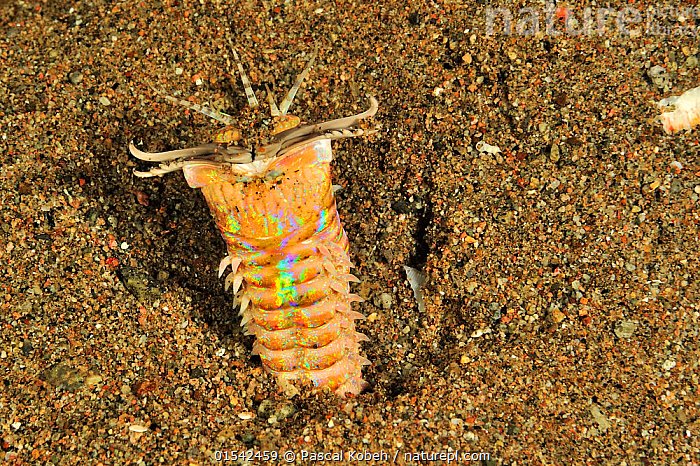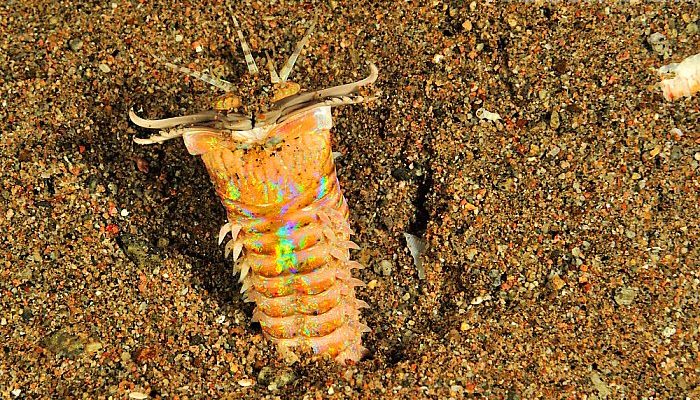
Digging out Bobbit worms isn’t just a wild adventure; it requires a little strategy and finesse. Think of it like trying to retrieve a hidden treasure from a buried chest. You’ll need some tools, patience, and maybe a bit of luck. In this guide, we’ll explore various strategies to help you unearth these magnificent creatures without causing too much disruption to your aquarium or the worm itself.
Understanding the Bobbit Worm
Before we dive into digging strategies, let’s take a moment to understand what we’re dealing with. Bobbit worms (Eunice aphroditois) are marvels of the marine world. They can grow up to 10 feet long, although you’ll usually see smaller versions in home aquariums. Their long, segmented bodies are often hidden beneath the substrate, where they wait to ambush unsuspecting prey.
You might be surprised to learn that these worms are not just captivating; they play a vital role in the ecosystem. By aerating the substrate and breaking down organic material, they help maintain a balanced environment. So, while you might be annoyed at their hidden tendencies, remember they’re working hard down there!
Gathering Your Materials
Before you start digging, you’ll want to ensure you have the right tools at hand. Attempting to coax a Bobbit worm out of hiding can be tricky, and having the proper materials can make all the difference. Here’s a quick list of what you might need:
- Long tweezers or a grabber tool: These help you handle the worm gently.
- Small siphon: This is useful for removing the substrate around the worm.
- Soaking bucket: A place to relocate the worm once it’s out.
- Lighting: Bright enough to see into the substrate without startling the worm.
Having these tools will allow you to proceed with caution and care. Think of it like preparing for a treasure hunt; you’ll need your gear to ensure a successful dig.
Locating the Bobbit Worm
Now, let’s talk about finding the hidden Bobbit worm in your aquarium. It’s not always as straightforward as it sounds. You might see a faint line in the substrate or maybe some little holes where the worm has been, but that’s about it.
Look for areas where the substrate seems disturbed. Pay close attention to spots where the sand shifts or has tiny mounds. The worm may also leave behind trails of debris, a telltale sign that it’s been moving around. If you’re lucky, you might even catch a glimpse of its colorful head peeking out.
Here’s the thing: patience is key. Spend a bit of time observing before you try digging. A nice cup of coffee and a good watch can go a long way!
Gentle Excavation Techniques
Once you’ve pinpointed where your Bobbit worm is hiding, it’s time for the delicate part: excavation. The best approach is to gently remove the substrate around the area where you believe the worm is. Here’s how to do it effectively:
1. Use your siphon to carefully remove the top layer of sand or substrate, exposing the worm’s hiding spot.
2. Work slowly and meticulously. You want to avoid digging too deep or causing an avalanche of sand that could bury the worm further.
3. If you see the worm, use your long tweezers to gently coax it out. Be careful not to grab too hard. These creatures are delicate!
Working with gentle hands can really help. You wouldn’t want a friend to yank you up if you were taking a cozy nap, right?
Using Water Flow to Encourage Movement
If your initial digging efforts don’t seem to work, don’t fret! Another strategy is to use water flow to your advantage. By changing the current in your aquarium, you can encourage the Bobbit worm to come out of hiding. Here’s how:
– Adjust your filtration system or add a powerhead to create a gentle current. Bobbit worms are curious and may respond to the movement of water.
– Be careful not to create a strong flow that could stress or harm the worm. You’re just trying to create enough movement to coax it out.
– Keep an eye on the substrate; if the worm feels the flow, it might adjust its position and make itself visible.
Honestly, it’s like inviting someone out of their shell for a friendly chat!
Relocating the Worm Safely
Once you’ve encouraged the Bobbit worm to come out, it’s important to handle it safely. Here’s what to do next:
1. Gently use your tweezers to lift the worm, supporting its body as much as possible.
2. Place it in your soaking bucket or a quarantine tank filled with water from your main aquarium. This keeps the environment stable.
Remember, the goal is to keep stress to a minimum. You wouldn’t want to leap from your cozy spot right into the unknown!
Monitoring Your Aquarium After Removal
After you’ve successfully dug out the Bobbit worm, it’s crucial to monitor your aquarium for any changes. The removal process can disrupt the substrate and the balance of your tank. Here are a few things to keep an eye on:
– Watch for any changes in water quality. If you’ve moved a lot of substrate, you might stir up organic matter, which can affect ammonia and nitrate levels.
– Keep an eye on any remaining inhabitants. Sometimes, the disturbance can stress other creatures in the tank.
– Consider re-evaluating the layout of your substrate. If you’ve had trouble with the Bobbit worm before, you might want to rethink how you place your substrate or even the worm’s location.
You might think of this step as cleaning up after a party. It’s essential to ensure everything is back to where it should be!
Preventing Future Hidden Worms
While it’s fascinating to have a Bobbit worm in your aquarium, you might want to prevent it from burrowing too deep in the future. Here are a few strategies for keeping these creatures visible and accessible:
– **Layer your substrate**: Use a mix of coarse and fine substrate. This can discourage the worm from burrowing too deep.
– **Maintain consistent water flow**: A gentle current can help keep the worm active and near the surface.
– **Regular tank checks**: Spend a little time each week observing your aquarium. This can help you identify any changes or hidden inhabitants early on.
Prevention is often easier than excavation after the fact!
In conclusion, digging out burrowed Bobbit worms can be a challenge, but with the right tools and techniques, you can make it a smooth process. Whether for curiosity or tank maintenance, these strategies will help you enjoy your aquarium’s hidden treasures without too much fuss. Remember, patience and gentle handling are your best friends in this venture. Good luck on your treasure hunt!

